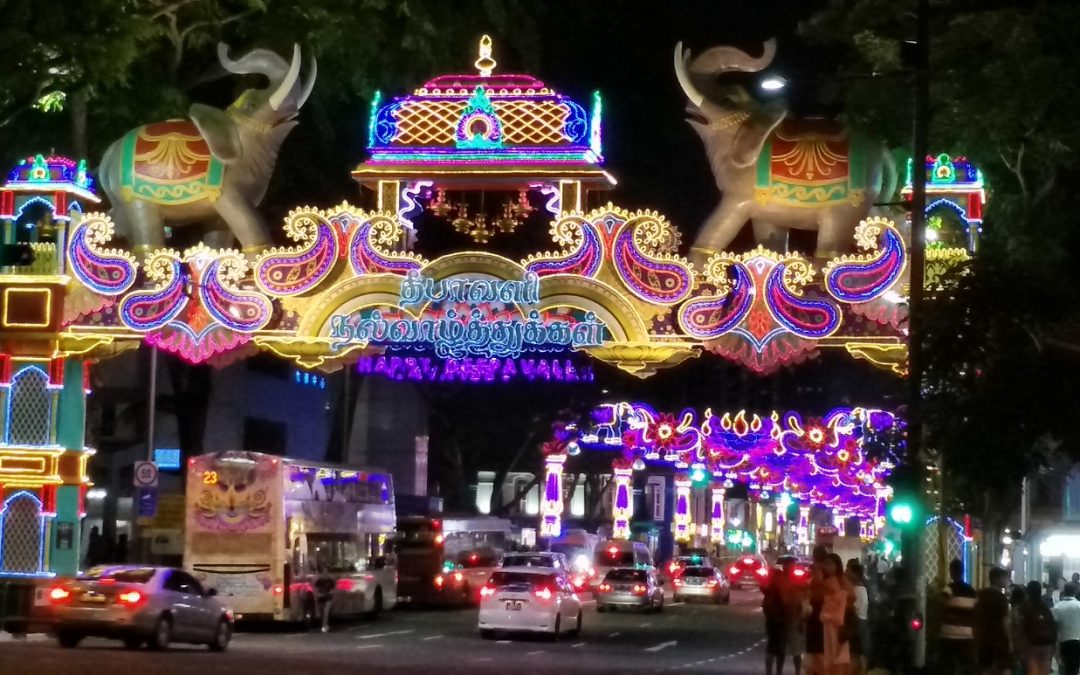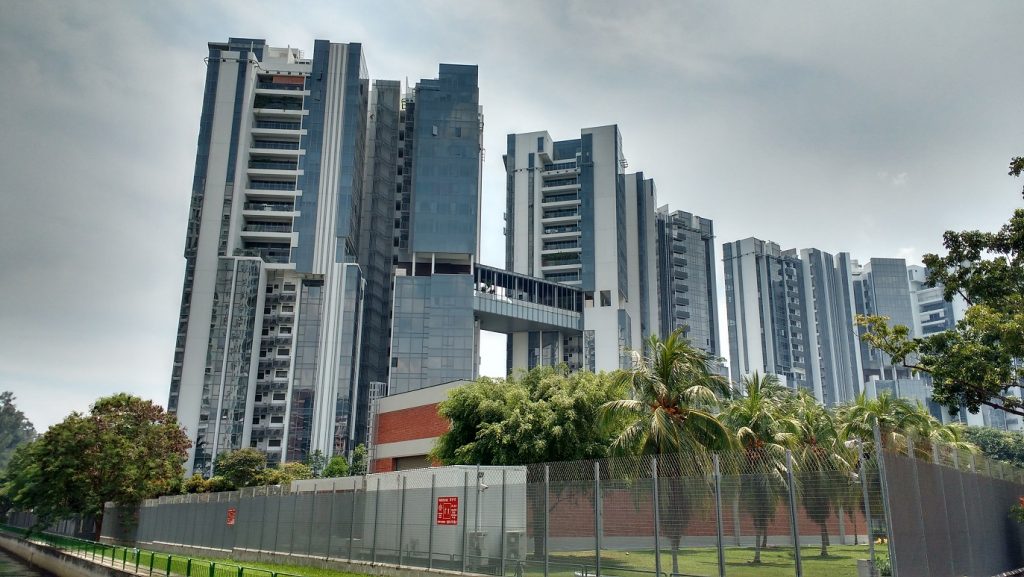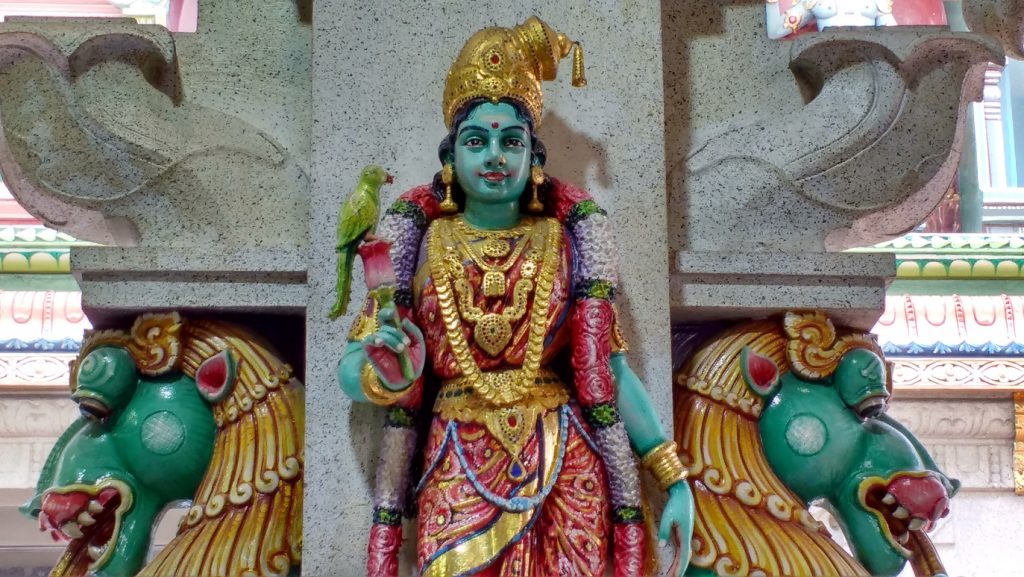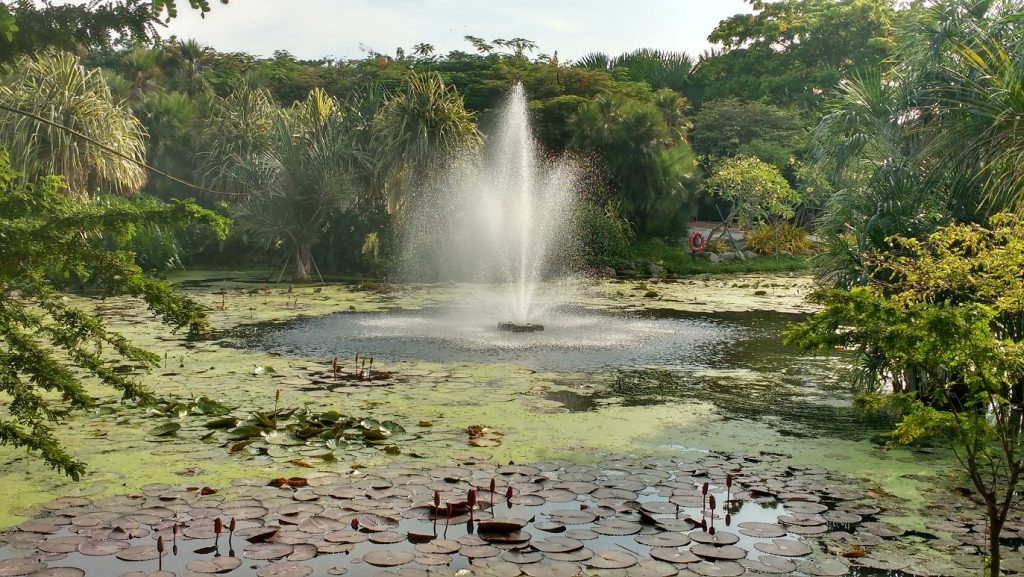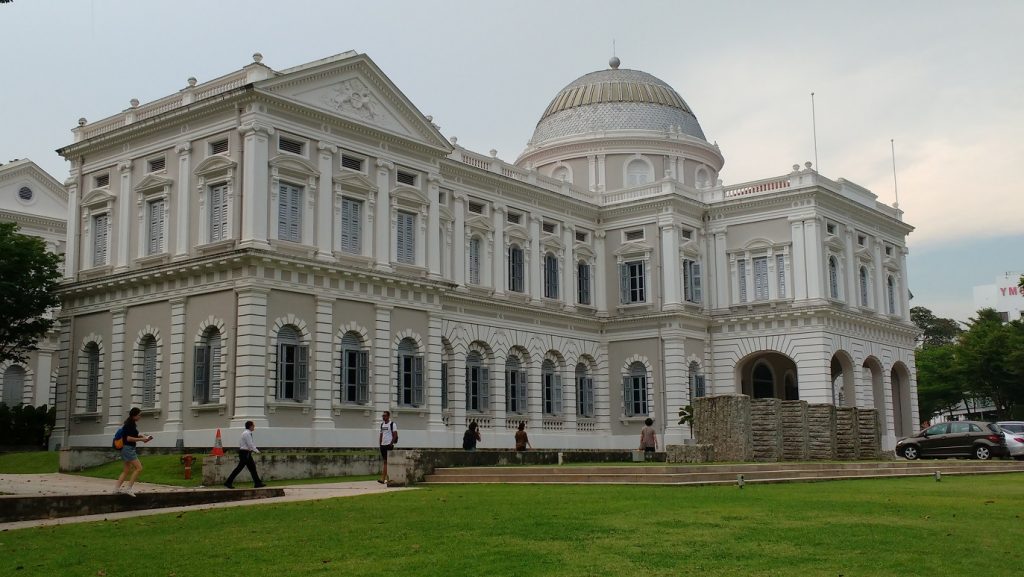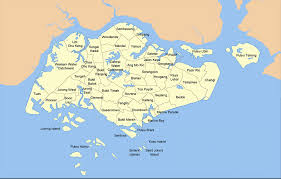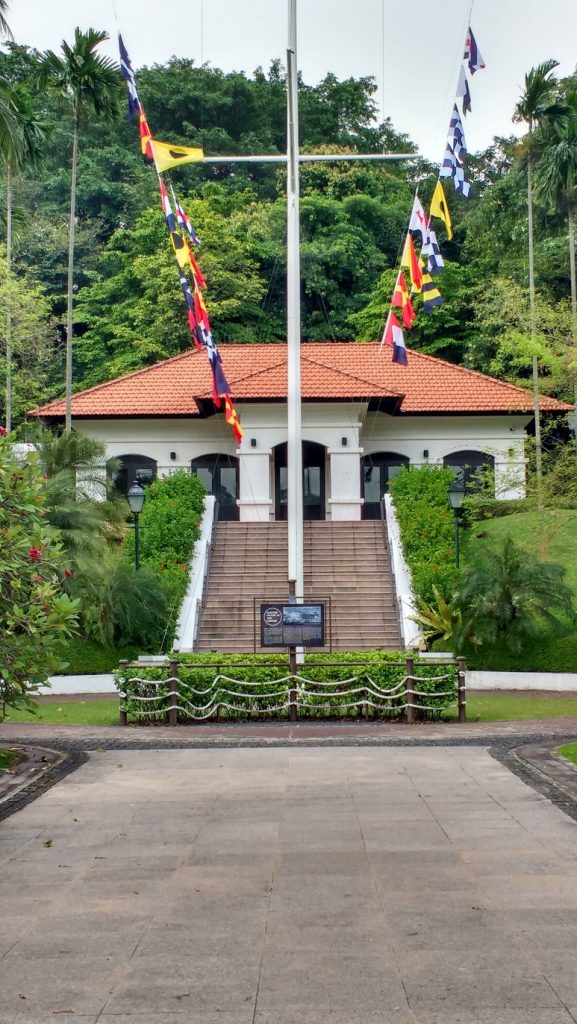Singapore sits on the bottom tip of the Malaysian Peninsular in South East Asia. It’s joined to the mainland by two bridges. In this article I will tell you the top things do in Singapore and how to explore Singapore on a budget.
Yes, Singapore can be expensive, but it’s not necessarily as expensive as you might think. There are ways to reduce costs and ways to see the main sites in the city without breaking the bank.
“This post contains affiliate links and/or references to our advertisers. We may receive compensation when you click on or make a purchase using these links. Scarlet Jones Travels is a participant in the Amazon Services LLC Associates Program, an affiliate advertising program designed to provide a means for sites to earn advertising fees by advertising and linking to Amazon.com”
(Almost) Everything that you need to know about Singapore.
Singapore gained its independence in 1965 and it now has a reputation as one of the top financial and economic centres of the world. According to Wikipedia Singapore was actually booted out of Malaysia when the Parliament of Malaysia voted 126-0 in favour of the expulsion on 9 August 1965 following race riots the previous year. On that day, a tearful Lee Kuan Yew announced on a televised press conference that Singapore was a sovereign, independent nation.
Singapore has the nickname ‘the fine city’. This has a double meaning. Fine – as in very nice and fine, and fine as in a penalty fee for an offence. It is illegal and you can be fined for dropping litter, chewing gum in public or crossing the road outside a designated crossing place or against a red light, to name but a few things. The government rules with a tight fist and there are harsh penalties for many misdemeanors.
However, the majority of the citizens are happy to accept the tight rules and regulations in return for a calm and ordered way of life. In fact, each of the huge apartment buildings have to adhere to strict racial quotas – no more than a certain percentage of an ethnicity can occupy each building at any one time. If you are of Chinese heritage and want to buy or rent in a particular location you have to wait until another Chinese family moves out and the same goes if you are Indian or Malay too.
[grwebform url=”https://app.getresponse.com/view_webform_v2.js?u=spPd&webforms_id=13127101″ css=”on” center=”off” center_margin=”200″/]
Travelling to Singapore
I took one of Norwegian’s direct flights from London to Singapore. It was a budget ‘no frills’ flight but because I wanted to check my backpack into the hold I paid a little bit extra which also bought me two airline meals, a snack and some drinks on board.
The plane was a Dreamliner which has larger than normal windows and ‘mood lighting’! The interior design gives the appearance of more space, the air system is definitely superior (no dry eyes or a cough for me) and I was thrilled to find that my neighbours were just as keen to talk as I was and they had interesting lives too.
I found my extremely cheap flight by searching on Skyscanner and booking through the link that they supplied – click here to search for the best deals or read more in the panel at the end of this post.
Sophie is a deputy head zoo keeper in the UK and her partner Marcus has more energy and enthusiasm than anybody that I have met for a long time so it will be great to follow their adventures around Malaysia and Singapore, and as a bonus I am hoping to get some useful tips from Sophie about visiting an ethical Orang Utang reserve for when I go to Malaysia.
Take a good guide book which will help you get around the city (Lonely Planet have some good deals and contain loads of information and maps) and sign up for Uber which is widely used. I was hardly ever kept waiting but both the metro and the bus system are cheap and as you might expect, efficient too.
Divali or Deepvali – the Hindu festival of light
My friend Belinda who lives in Singapore and I went along to find out how the Hindu festival of light – Divali – is celebrated in Singapore. Belinda and I first met when we were volunteering at the same NGO in Peru, and have subsequently met twice in Thailand and previously in Singapore.
First we ate lunch in a wonderful vegetarian restaurant called the Komala Vilas which is opposite the main temple. We were surrounded by Indians; the ladies were wearing some fabulous saris because you should wear your most colourful clothes for Divali, and we ate the traditional way using just our right hand.
After our meal we crossed the road and after removing our shoes and washing our feet we joined hordes of people in the Sri Veeramakaliamman Temple where we walked slowly in a circular route around the various Hindu gods and goddesses. We received an auspicious ash bindi from a couple who took the time to explain the various customs and then were bemused by another gentleman who wanted to give us a red bindi. Indicating that we should hold out our hands, but slapping down my pro-offered left hand (I should have known better) he poured a little pile of red powder into our palms. Confused Belinda and I looked at each other. If we were not to use our left hands how could we dot our foreheads? Another lady rescued us and tutting loudly and shaking her head she ‘dotted’ us before scurrying off.
The left hand is considered dirty in many cultures and should never be offered to anybody. During our meal, both myself and Belinda actually sat on our left hands to remind ourselves not to use it. No matter how much I practice I don’t think that I will ever get the hang of tearing up bread with just my right hand. I have always wondered how somebody who is left handed copes – or are they simply forced to adapt from birth? If you know the answer to this question, please let me know in the comments below.
Singapore – a green and sustainable city
Everywhere in Singapore you will see gardeners carefully tending the many green spaces. Despite the skyscrapers and the modern buildings there is an awful lot of greenery (and water) around.
If you want to learn about how Singapore is doing its best to conserve energy and resources then you should visit the Gardens by the Bay. Here, huge artificial supertrees loom high above the park, supporting amazing vertical gardens. There are many sections to this huge park, entrance to most of it is free, and all sections are highly educational as well as just downright pretty.
I cycled from my friend’s home through parkland that runs alongside the seashore next to the beach to the Gardens by the Bay with views of literally hundreds of container ships and tankers anchored up and waiting to get in or leave the port. I crossed the large barrage which was built to create a freshwater reservoir for the city and then I entered the huge parkland where sustainability and environmental protection is taught on entertaining information boards and displays. Despite no hills, I was a soggy blog of sweat by the time that I finally got back home – the humidity in this city is intense – although as I was soon to discover, it was nothing compared to the heat in Melacca.
Explore Singapore: top things to do in Singapore
I began my Saturday by meeting a friend at the Merlion. Singapore was named the ‘lion city’ after a Sumatran prince landed and claims to have seen a lion. Singa is the word for lion in Malay and this iconic statue was the main symbol for the city before the amazing Marina Bay Sands Resort replaced it on all of the glossy brochures.
I drank tea with David in the beautiful building that is now the Fullerton Bay Hotel before heading off to Fort Canning Park. This large hill overlooks Singapore and it was initially the place where the Malay royalty built their palaces, and later it was where Sir Stamford Raffles (the founder of modern day Singapore) chose to build his first home and a botanical garden.
Once the British colony was established, they built a fort and a military base and the two main buildings remain as a reminder of the grandeur that the officers would have lived in.
I visited the Battlebox (entrance costs S$18 and includes a guide) which is the underground bunker constructed in the 1930’s and from where the British Far East Command Headquarters ran operations during World War II. The excellent tour was led by Aysha who explained the story of how and why the historic decision to surrender Singapore and its million citizens to the Japanese was made.
We walked through many of the underground rooms and learnt how the communications worked, the ventilation system and also much of the psychology behind the wartime planning.
There was a huge responsibility on the officers and their subsequent decision to surrender. As a result of this decision 80,000 British and Commonwealth soldiers were taken into captivity in horrific conditions and one million residents of Singapore were exposed to three years of terror and many were executed.
There is an amazing book by Eric Lomax that documents the life of one of these soldiers who was put first into Changi prison in Singapore and later transferred to Burma to work on the infamous ‘death railway’
You can order your own copy of [easyazon_link identifier=”B0036RCVJM” locale=”UK” tag=”scajonblo0e-21″]The Railway Man at this Amazon link[/easyazon_link]– and while I haven’t seen it, a[easyazon_link identifier=”B00HT29OOK” locale=”UK” tag=”scajonblo0e-21″]film has been made too.[/easyazon_link]
I visited Hellfire Pass and Kanchanaburi when I was in Thailand. This was an extremely moving place with an excellent museum showing how the Japanese forced their prisoners of war to build their railway so quickly – click here to be taken to that article
After emerging from the Battlebox I spent a very happy hour or so exploring the park and taking in the Spice Trail, part of the original cemetery and the various buildings that are dotted around, all in wonderful surroundings in this oasis above the city. www.battlebox.com.sg
As I wandered down the hill and back towards the city I passed through the massive concourse of the National Museum of Singapore and then I passed the Peranakan Museum. I paused to ask how much the entrance fee was just as a guide was introducing himself to a group of visitors. He was so engaging and so interesting I immediately bought a ticket so that I could tag along. I wasn’t disappointed either as our guide took us to the best exhibits in the museum and explained much of the Peranakan culture (entrance cost me S$10 with a free guide thrown in).
Displays in the museum cover Peranakan life through their birth, marriages and death. The culture is rich in colour and with beautiful ceremonies. Peranakan means ‘child of’ or ‘born of’ and it refers to people of mixed ethnic origins in the Malay Peninsula. The majority of these people were initially traders and business people who met and mixed through marriage and who have assimilated several cultures, be they Chinese, Malay or Indian. Originally, the traders from China and India arrived in Malaysia on the trade winds but they had to stay awhile until the favourable winds could return them to their homeland. Consequently many fell in love and married Malays and their descendents became known as Peranakan.
Singapore always confuses me so I was very pleased when our guide who was leaving the building as I did, offered to accompany me part of the way to my bus stop which was in the direction of his metro station. Sadly I didn’t get his name but I would have loved to have talked some more with him because he was so passionate about his work. I do know that he used to lecture in tourism and lives across the border in Malaysia…so if you do come across him, grab his tour.
Food and friends
I was very pleased to meet Faisal again whom I had met in a hostel in Porto, Portugal earlier this year. We shared lunch (Malay food) in a mall and caught up with the gossip and Faisal told me some more about his business in Singapore – teaching both adults and children how to cycle.
I love to hear how entrepreneurs discover their niche and teaching children to cycle was quite alien to me. In the UK, kids generally graduate to a small bike with stabilisers after their pedal tricycle and after spending a Sunday in the park with a parent or grandparent they are just left to their own devices to learn how to ride. I remember vividly the day that I cracked my bike riding. I had had the obligatory time being pushed around the garden by my father with no success and one day I took myself outside the house and determinedly rolled down the hill and around the corner over and over again until I worked out how to balance….and then I was away pedalling furiously.
The old dock areas
Much of the original docks have been transformed into areas with bars and restaurants and a whole area had given itself over to fish and seafood, and especially crab.
On my first visit to Singapore Belinda and I ate at one of these restaurants. A big bowl of crab in a black pepper sauce was presented to us, together with a set of tools – nutcrackers, or should that be claw crackers and a hammer as well as an enormous bib. We needed to wear the bib as by the end of the meal I was covered in crab goo.
Raffles and the Singapore Sling
I had always promised myself that I would have my first Singapore Sling cocktail in the bar where it was invented and so one evening we went along to the Long Bar in Raffles Hotel. The main ingredients of gin, cointreau and pineapple juice all went down the hatch very well and at an exorbitant price but it had to be done and I have to say, that I did enjoy it. The experience was made more special due to the surroundings – although the bar has been renovated it has been updated in keeping with its original style with teak floors and ceiling fans although I guess that the atmosphere would have been far more genteel than modern times with chattering tourists filling it up.
Skybars
For the very best sky bar you should head to the top of the Marina Bay Sands. It is worth it here for the view alone. Drink prices and service leave a lot to be desired but you can visit and leave again after taking a few photos without parting from any money from your wallet.
Summary of Singapore
There is no denying it, Singapore is not a cheap city but you can adapt it to your budget. Alcohol is very pricy everywhere and food, even in the supermarkets generally costs a lot more than you would expect to pay in Europe. However, the hawker centres, food markets and smaller backstreet cafes and restaurants (such as the Komala Vilas) offer extremely reasonably priced and tasty food.
Transport links around the city are as good and efficient as you might expect and the bus drivers that I came across were all super-friendly.
I know that I am extremely lucky to have a wonderful friend Belinda who lives in the city and who invited me to stay with her, but there are many reasonably priced hostels and lots of AirBnB hosts that offer rooms or entire apartments (contact me if you would like a first time discount off an AirBnB stay)
Entrance to many of the main museums and attractions are not overpriced and you can get plenty of enjoyment from simply wandering around the (free) grounds at the Gardens by the Bay without paying the entrance fee for the domes or the skywalk.
Yes, Singapore is highly regulated, extremely clean and has none of the organised chaos of the rest of South East Asia but it is certainly worth a visit for at least a couple of days.
I didn’t get around to the interior, Sentai Island, the Botanical Gardens or the zoo so I shall simply have to return another time.
Getting great cheap flight deals and booking with Skyscanner
I LOVE the Skyscanner site.
It searches and compares flights between any destination that you want to travel and even those that you don’t yet know that you want to travel between. Clicking on the link and booking via their site is nearly always the same as going to the airline direct and in many cases I have saved myself quite a bit of money.
The best thing is that you can enter vague search queries and the site will deliver almost every single variable possible: for example,
- a) Search from Hanoi to Bangkok any time during March
- b) Search from any airport in Vietnam to any airport in Thailand on a specific date or
- c) Search direct flights/cheapest options….or any variation of the above.
Back at the beginning of the year I wanted a week away in Europe. I didn’t care where, but I knew that I had to fly from Barcelona. So I searched flights from Barcelona to Anywhere during the whole of March and Porto came up top. I had a return flight with very good departure times for £30. Bargain.
And as a bonus for me, if you book using any of the links to Skyscanner in this article or anywhere else on my website I will earn a teeny weeny bit of commission at no extra cost to you. Bookmark this page/link and use the site (via Scarlet Jones Travels) for your next adventures.
